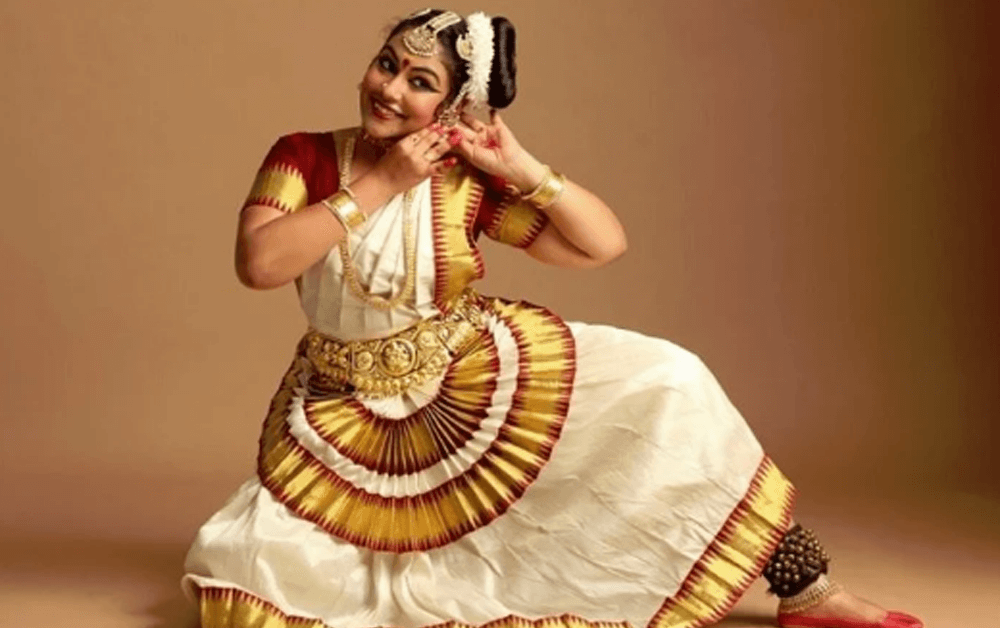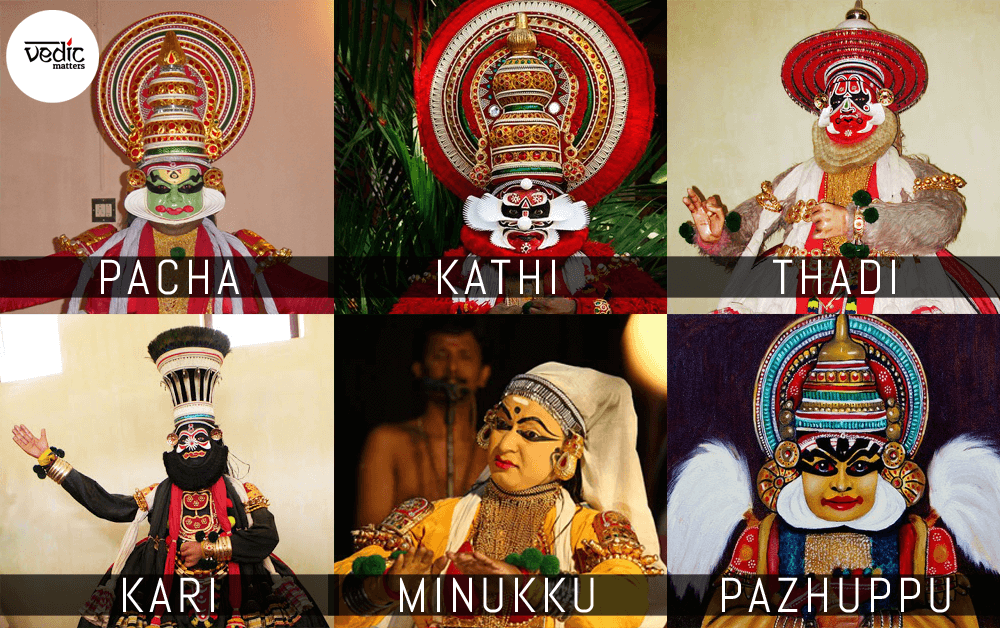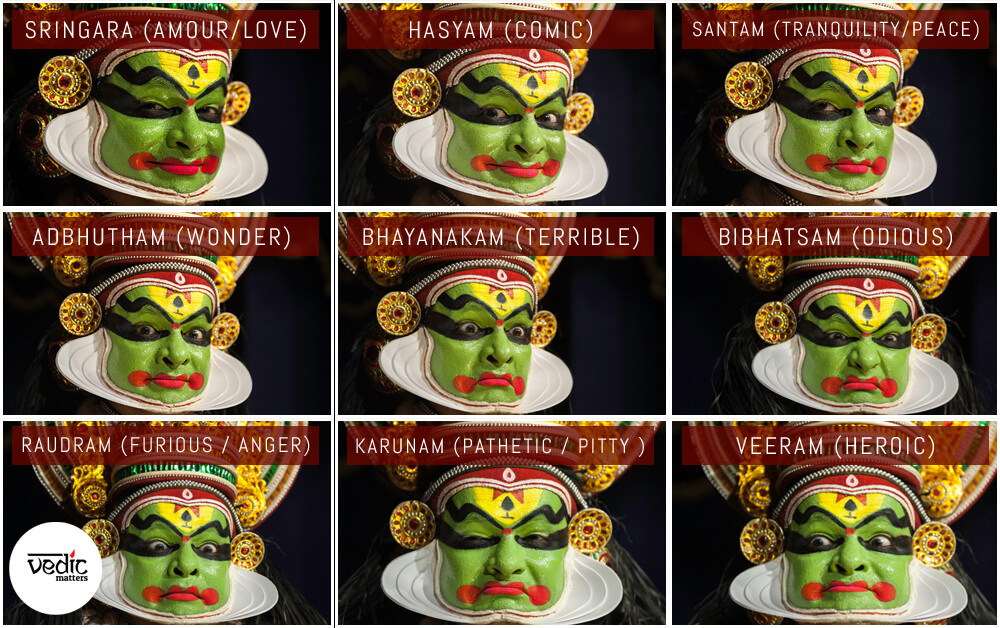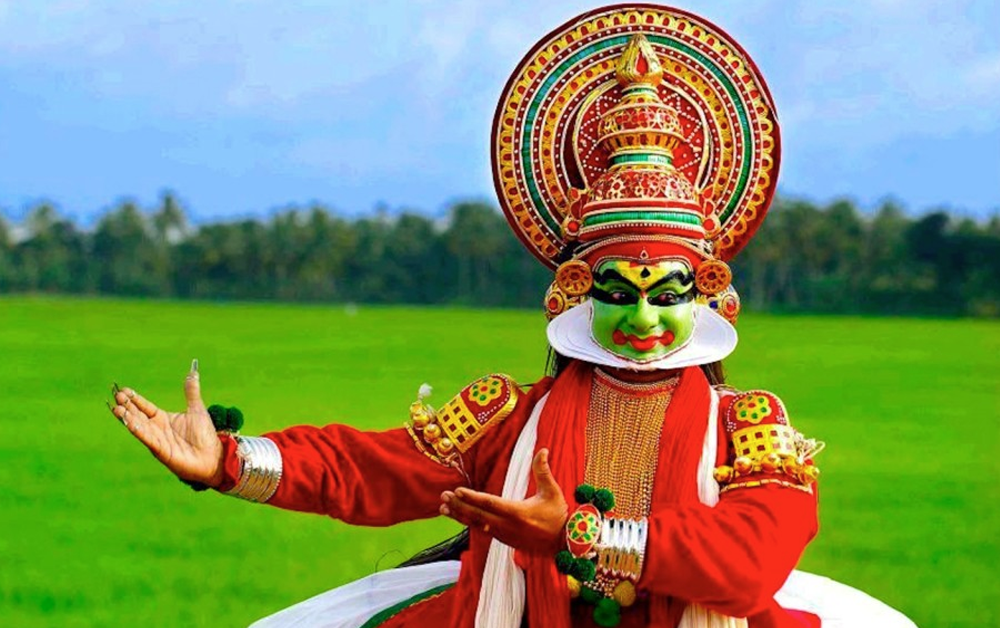Mohiniyattam

Kathakali is a renowned Indian classical art form originated in Kerala. This art form communicates to the spectators through impressive mudras using hands and steps. Artists convey the ideas through these mudras or sign language based on Hastha Lakshana Deepika. To perform Kathakali on stage, one must need music, costumes, makeup and it is the mixing of devotion, drama and dance too. It tells the story of the past that was taken from Indian epics Mahabharata and Ramayana.
Kathakali includes the elements of fine arts. They are Natyam, Nrithyam, Nritham, Sangeetham. Natyam is used to convey emotions through facial expressions. Nrityam is an artist who uses hand gestures to understand the emotions and meaning of the story. Nritham is the usage of rhythm and movement of hands, legs and body. Sangeetham is the basic component song and instruments accompanied to perform Kathakali. Chutti is facial painting.

An important thing that uses for performing Kathakali is makeup. Five different types of makeup such as Pacha, Kathi, Kari, Thadi and Minukku are used. Each of the makeup specifies a certain character. Pacha makeup characterises Noble protagonists. Kathi makeup depicts the villainous characters. Kari is used to symbolising she demons. Thadi makeup is divided into three types such as Vella Thadi, Karutha Thadi and Chuvanna Thadi. Vella Thadi indicated superhuman monkeys like Hanuman. Karutha Thadi specifies a hunter and Chuvanna Thadi depicts wicked characters. Minukku is mainly used to indicate female characters and sages.

As an ancient martial art, the main difference from other art forms is the use of facial expressions. Kathakali has nine facial expressions or Navarasas. They are Sringaram, Hasyam, Bhayam, Karunam, Rowdram, Veeram, Beebatsam, Adbhutham and Shantham.
The origin of Kathakali is considered from the religious theatrical forms such as Chakiarkoothu, Koodiyattam, Krishnattam and Ramanattam.
Kathakali presents in front of Kalivilakku. Before Kathakali starts, two people hold a curtain called Thiraseela in front of the stage. Main Kathakali artists stand behind the Thiraseela before the performance. There will be a Kelikottu on the stage. Kelikottu is the announcement to the spectators to get the attention of the audience followed by Thodayam. For conducting Kelikottu instruments such as Chenda, Maddalam, Elathalam and Chengila are used. By listening to the loud music of these instruments, people can understand that Kathakali will begin soon. Artists are performing silently only in facial expressions and body attitudes, but the singers sing the words of a dialogue with the help of those instruments.
Drums and Cymbals are played after Kelikottu. Thodayam presents two characters on stage to invoke the blessings of Gods. After that Purappadu comes as a continuation of this. Then the musicians and drummers hold the stage and entertain the audience with their skills in Melappada. It is continued by a debut, exceptPacha or Minukku, other characters perform a debut on stage. After all this, play begins. Chenda, Chengila, Ilathalam, Madalam, Idakka and Shanku are the instruments used as Orchestra. Ashtapadis is the ritual singing for Kathakali. The duration for performing Kathakali is from the night until early in the morning. To perform Kathakali perfectly, artists need a combination of rasa and mudras. One who wishes to study Kathakali, training gives from the age of ten.
Get weekly updates on the newest articles, quotes and newsletters right in your mailbox. Subscribe now
